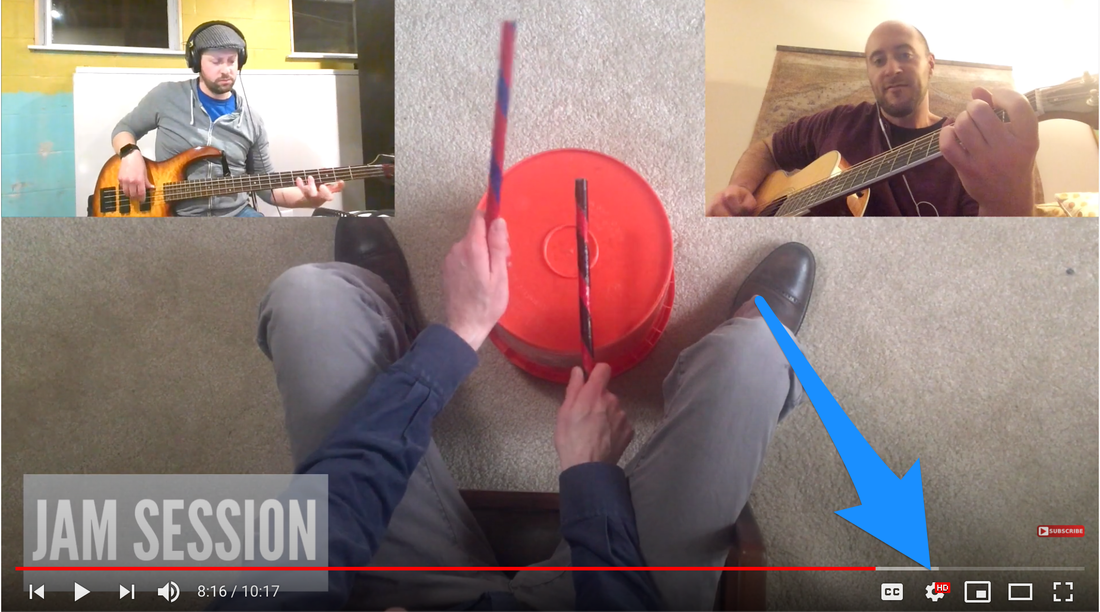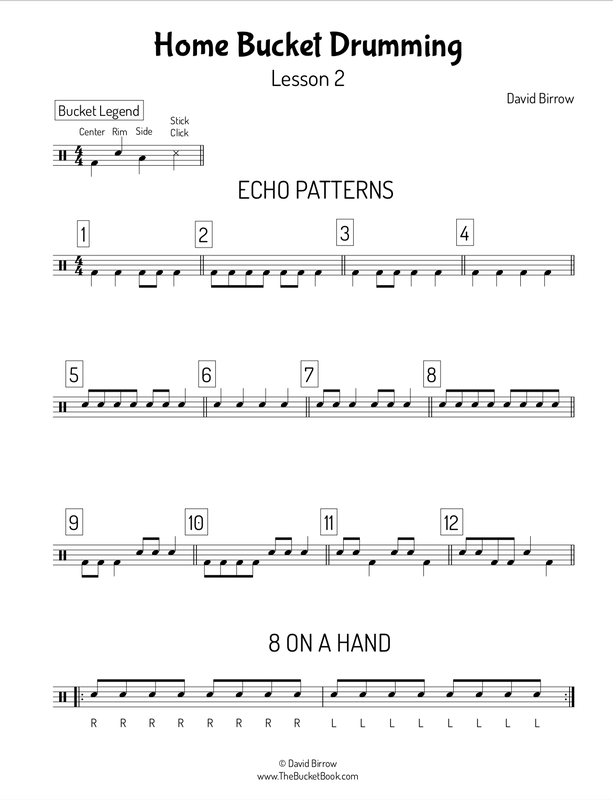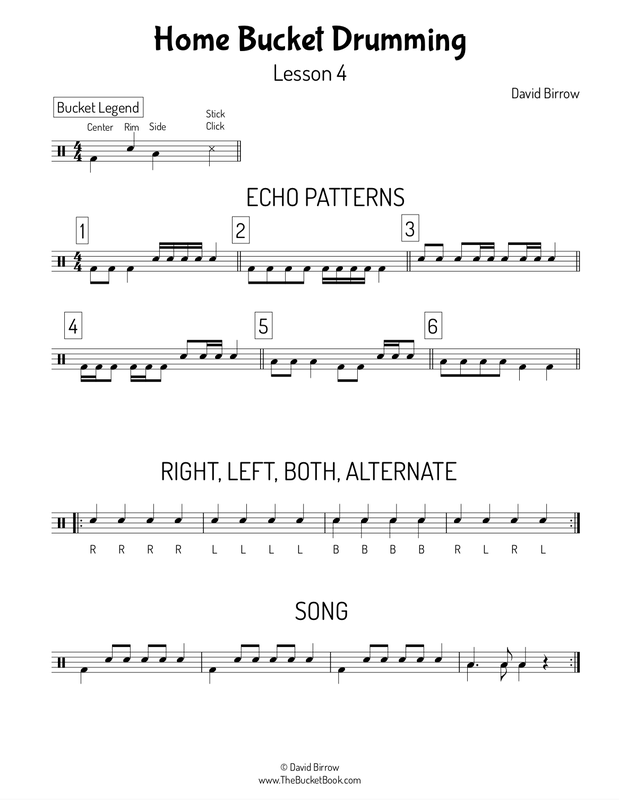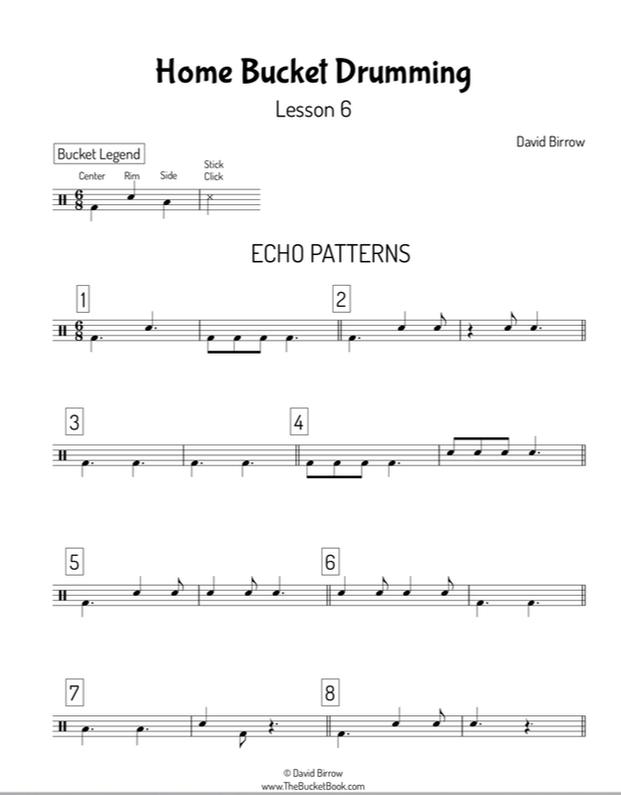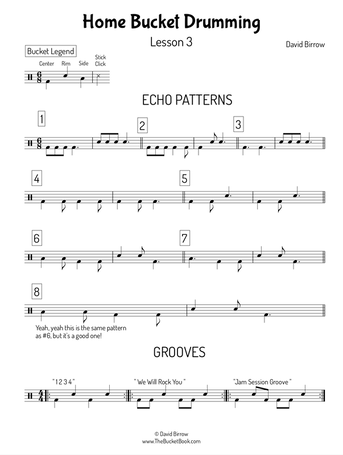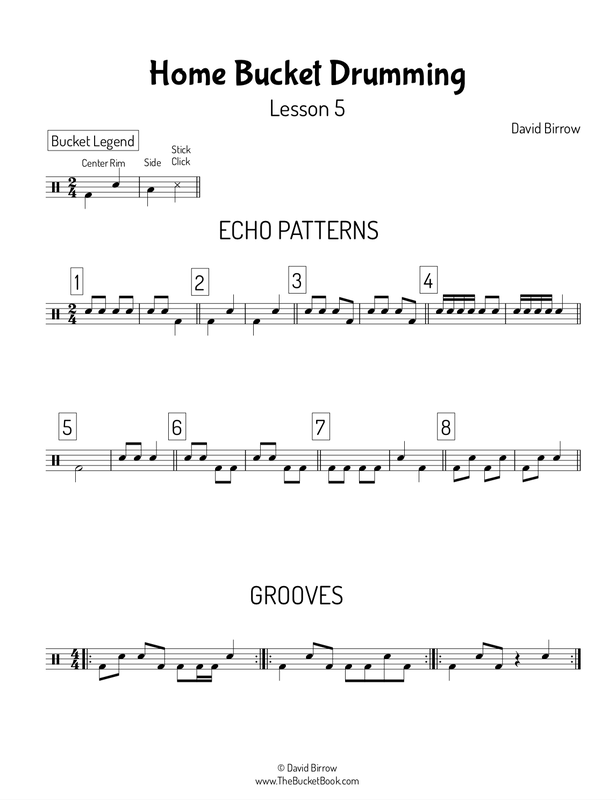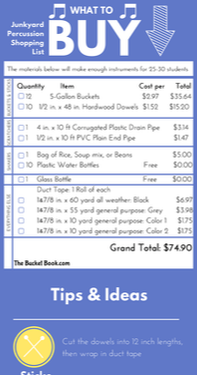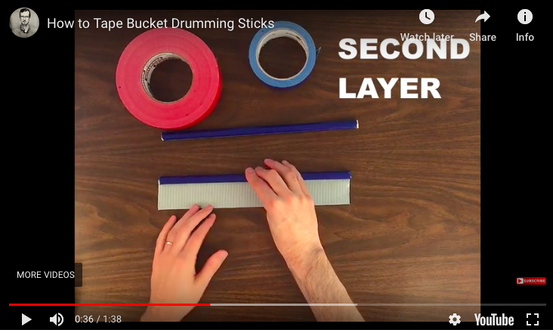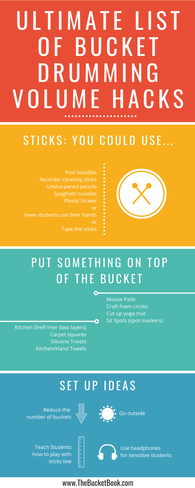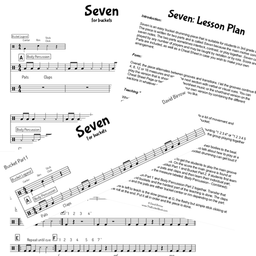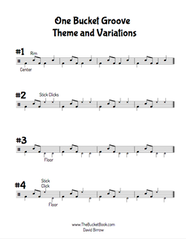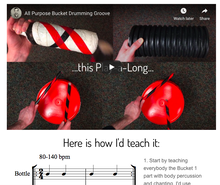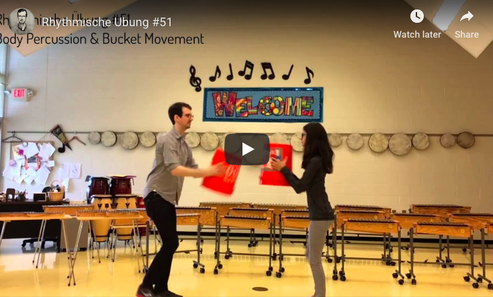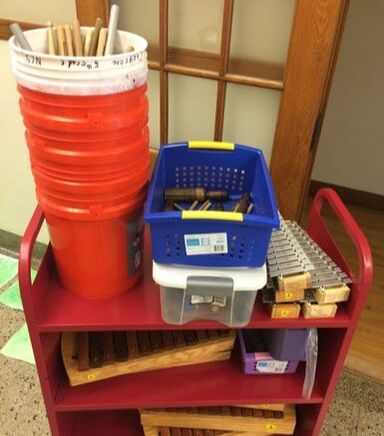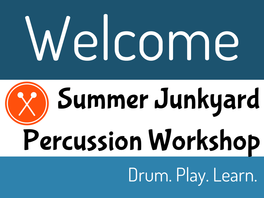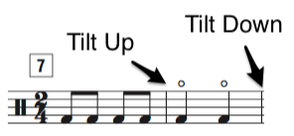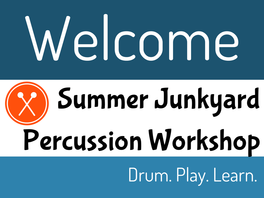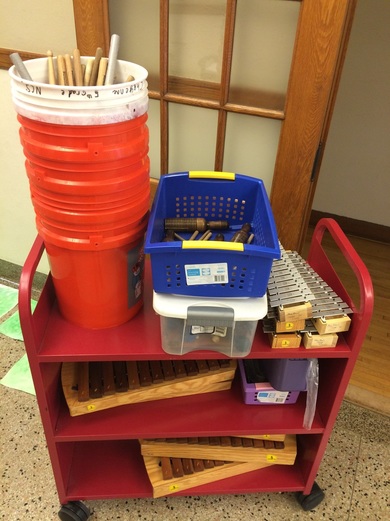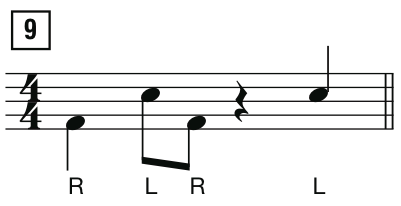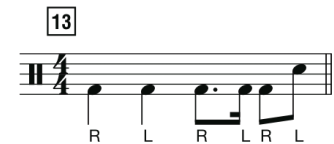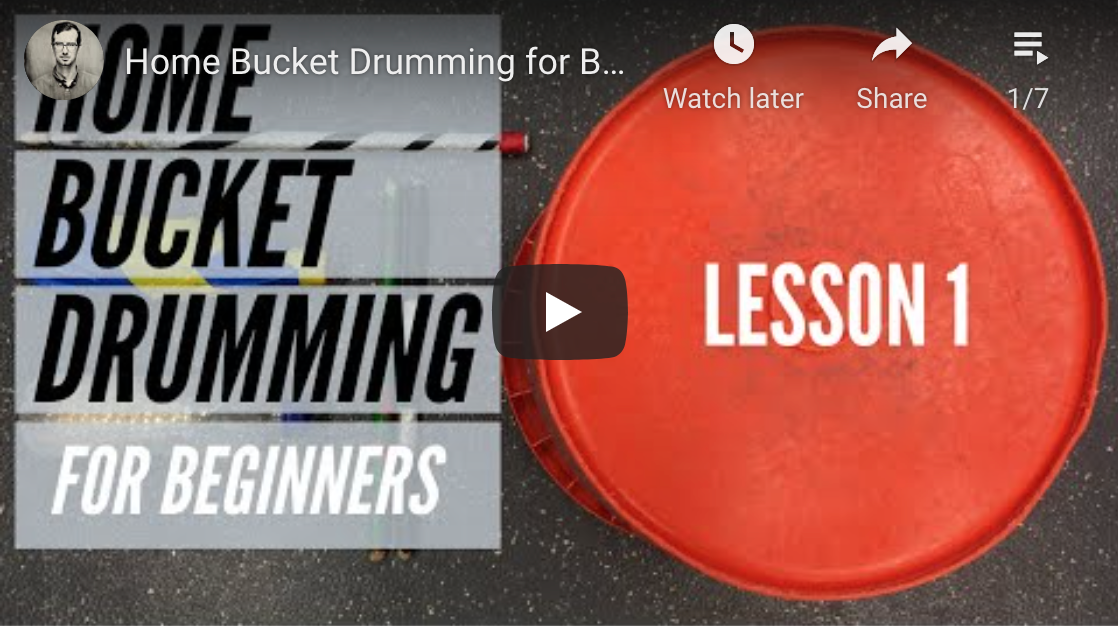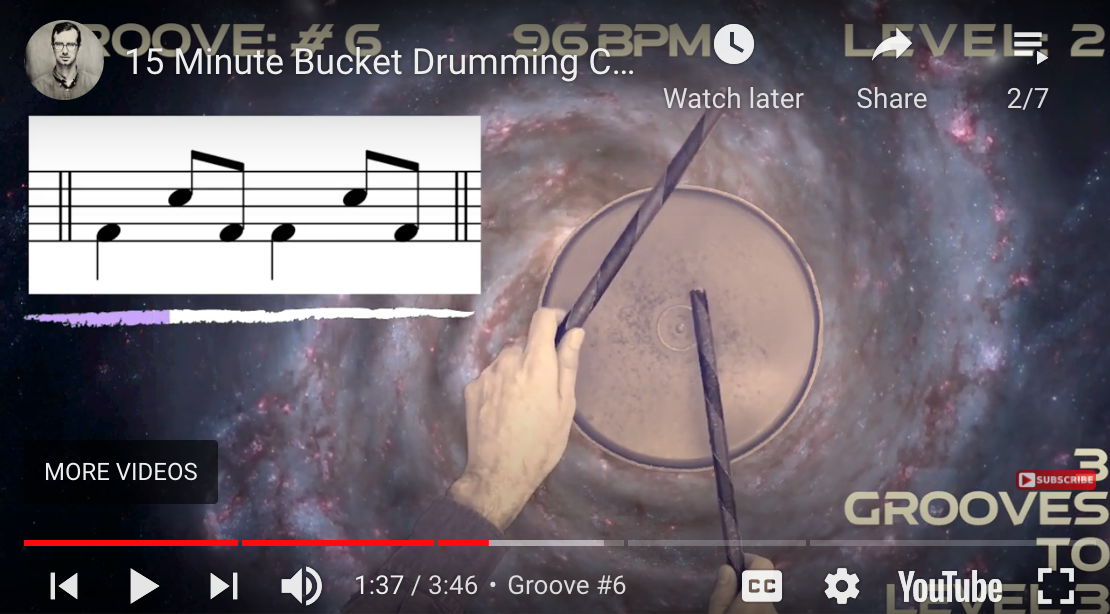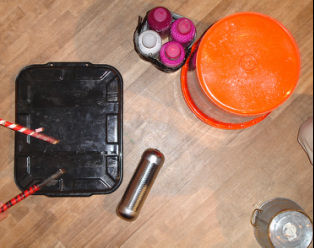UPDATE: April 26, 2024 - The Home Bucket Drumming for Beginners Series is now retired. More info here.
Hello music teachers and parents and students!
I've created a short, online bucket drumming course for your students to use while we're all distance learning/teaching due to Covid-19. The goal is to get your students making music and have some fun while doing it.
The curriculum is hands-off for teachers and hands-on for students and includes some 'greatest hits' from my 15 years of teaching bucket drumming to students ages 8 to adult. It's all road - tested and ready to go; these are all activities I've used with countless students between grades 3 and adult. I've included a lot of play-along/backing tracks in the videos so students get the feel for playing with musicians. Many of the videos even have a Jam Session with my musician buddies who are stuck at home.
Honestly, just send these videos to your students and they'll do all the work for you. I even include pdfs notating some of the material in the lessons if you'd like your students to read.
Here is the playlist containing all the videos (with more on the way!)
Hello music teachers and parents and students!
I've created a short, online bucket drumming course for your students to use while we're all distance learning/teaching due to Covid-19. The goal is to get your students making music and have some fun while doing it.
The curriculum is hands-off for teachers and hands-on for students and includes some 'greatest hits' from my 15 years of teaching bucket drumming to students ages 8 to adult. It's all road - tested and ready to go; these are all activities I've used with countless students between grades 3 and adult. I've included a lot of play-along/backing tracks in the videos so students get the feel for playing with musicians. Many of the videos even have a Jam Session with my musician buddies who are stuck at home.
Honestly, just send these videos to your students and they'll do all the work for you. I even include pdfs notating some of the material in the lessons if you'd like your students to read.
Here is the playlist containing all the videos (with more on the way!)
The course runs itself: just have the students get a bucket and sticks and play along with the videos. But here are some ideas to increase student engagement and interaction.
1. Embed or Paste Links for students
Post individual videos to Seesaw, Google Classroom, Schoology, Veracross, or whatever learning management system your school uses. Or post the entire playlist and have students work at their own pace.
2. Require Exit Tickets

Give students a chance to prove that they are learning by providing prompts for your students to respond to. They could respond with a comment on your LMS, or better yet audio or video. My favorite option is have students post performance videos on Flipgrid. If you haven't used Flipgrid before, it's awesome. It's a site where your students can share videos with you and other students in your class and students respond with videos of their own. It's worth your time to check out.
Here are some prompts you might use:
Here are some prompts you might use:
- Lesson 1 - Submit a selfie of you with your bucket and sticks
- Lesson 2 - Submit a video of you playing "8 on a hand"
- Lesson 3 - Submit a video of you playing one of the grooves
- Lesson 4 - Submit a video of you playing along with a song of your choosing (school appropriate!)
- Lesson 5 - Submit a video of you playing the bucket song
- Lesson 6 - Submit a video of you teaching how to do one of the things you’ve learned to a family member OR submit a video of a groove or unison that you composed
- ANY Lesson - Have students perform from the included pdf sheet music
3. Have Students Do It More Than Once
Think of each video like a workout or better yet: a rehearsal for a performance. Students should play through each video several times to build their skill level.
You could set a requirement such as: "Play with this video three times between now and next week." I've tried to keep the videos on the shorter side (2-10 minutes) so students would be more apt to repeat. them
You could set a requirement such as: "Play with this video three times between now and next week." I've tried to keep the videos on the shorter side (2-10 minutes) so students would be more apt to repeat. them
4. Speed Up or Slow Down
Students can speed up or slow down the tempo by clicking on the gear icon on YouTube.
Too easy? Tell them to speed it up Too hard? Slow it down.
Just like you would do in an actual rehearsal.
Too easy? Tell them to speed it up Too hard? Slow it down.
Just like you would do in an actual rehearsal.
5. Have Them Read
The videos are designed for rote learning AND I've included PDF sheet music for most of the videos. Below are the links:
Contact me!
Feel free to get in touch with any feedback, ideas, suggestions, or problems (or successes!). Stay tuned for the 15 - Minute Bucket Drumming Challenge, which is a video series for older students.
TWITTER: @DavidBirrow
EMAIL: [email protected]
TWITTER: @DavidBirrow
EMAIL: [email protected]
